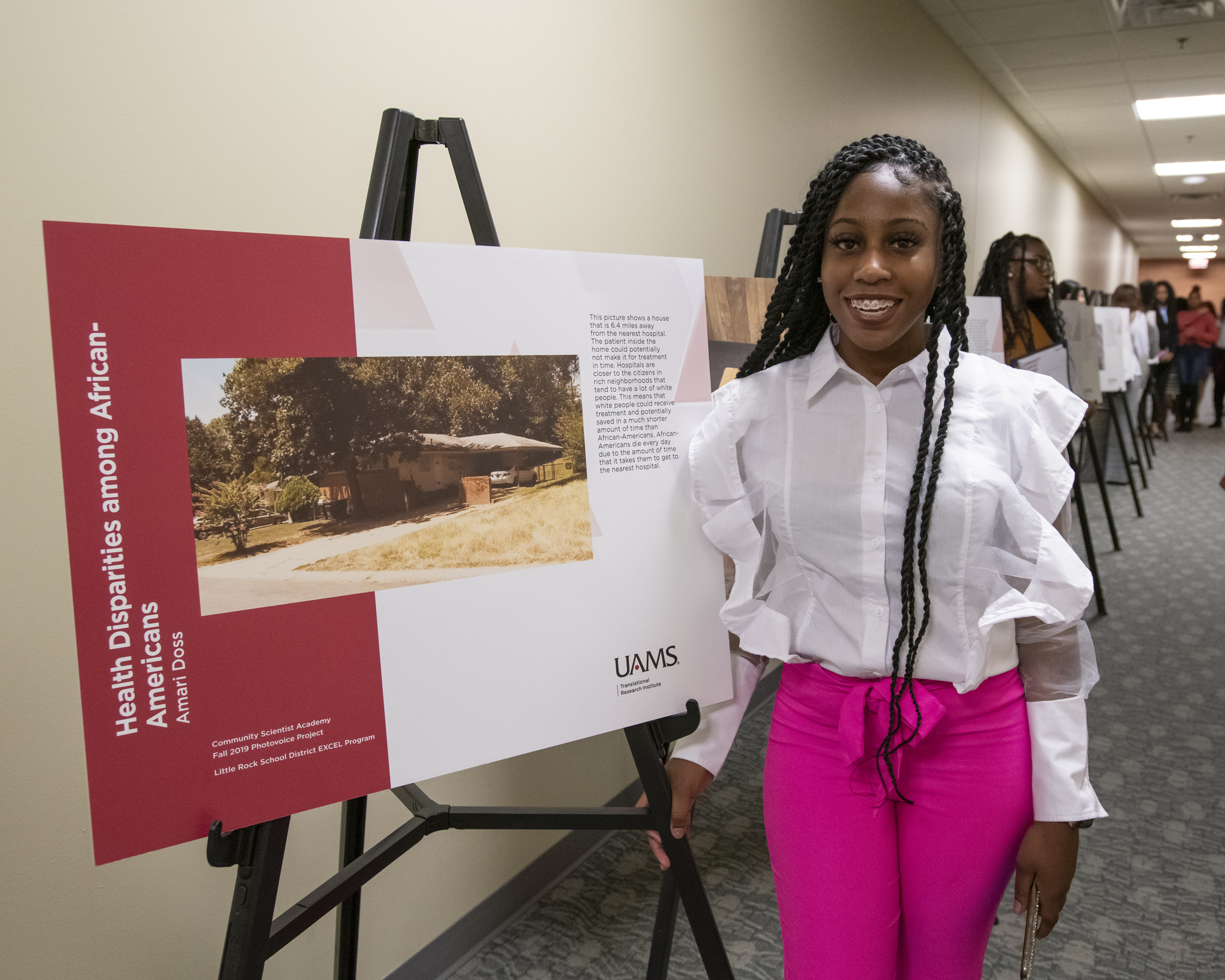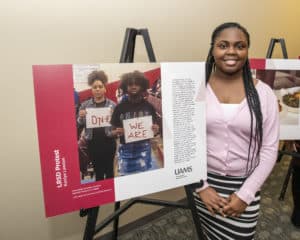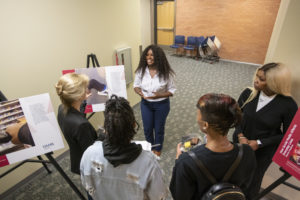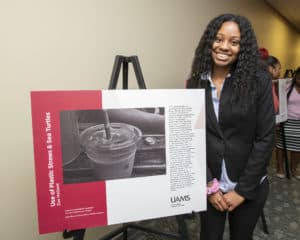Students See Career Possibilities at Community Scientist Academy
| High school student Kaniya Lawson was excited to learn that research could be part of her possible career as a psychiatric nurse practitioner. She was among the 24 Little Rock School District students who graduated from the fall 2019 UAMS Translational Research Institute’s Community Scientist Academy.
“They had actual researchers come in and show us professions that I didn’t even know existed,” said Lawson, a member of the academy’s fall graduating class of Little Rock School District EXCEL students.
Lawson and her fellow graduates came from across the school district as students in the EXCEL Advanced Medical Sciences Program. The 10-week academy that ended Nov. 21 helped her understand that she could incorporate research into patient care.
“I never thought about that direction of the health care field at all,” she said. “You can be hands-on with patients and still be a researcher.”
The students worked closely with the institute’s Community Engagement team on their PhotoVoice project. The project included taking a photo that depicted a health-related issue affecting themselves, their family, and/or their community. The students wrote a caption to accompany their photos to explain the issue, what has been done and what can be done to help address the issue.
Jaky’ra Bolden, whose poster was titled, “Grief and Mental Health Stigma,” spoke at the graduation, telling her fellow graduates, parents and teachers that the exercise was valuable to her.
“Photovoice gives us a chance to express ourselves,” she said. “We also get a chance to address real-world problems.”
Brian Gittens, Ed.D., vice chancellor for Diversity, Equity and Inclusion, congratulated the students and gave an inspirational talk before they received their graduation certificates. Afterward, the students stood by their posters and discussed them with graduation attendees and other interested visitors outside the UAMS Rahn Building auditorium. During these presentations, the students used the public speaking skills they learned in the academy.
“There is a story in every picture,” Bolden said, encouraging the audience to visit the poster presenters. “Let us take you on a journey through our minds.”
Zoe Holland’s poster was about the harm to sea turtles from discarded plastic straws. She read about the issue and watched videos showing how straws can become lodged in the turtles’ noses. “I wanted to figure out how to prevent it.”
Holland said the academy made her think of research in new ways.
“When I first came in I didn’t really think we were going to learn much – they were just going to talk at us the whole time,” she said. “I wasn’t really a big research person when I first came in and now I’m more open-minded to it, because they really explained the different kinds of research, and the people that work at UAMS came and spoke to us every single class. That really opened my mind to more options for research.”
In the past two years, the academy has been modified to reach different populations by increasing the academy length, including the PhotoVoice project for the students, and adding a one-day intensive academy session for veterans in Arkansas.
The traditional version of the academy, which held its first class in 2016, is six weeks and designed for community members to increase community understanding about the research process and offer research decision-making opportunities to communities, patients and other stakeholders.
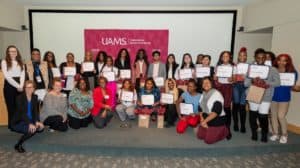
Twenty-four Little Rock School District EXCEL students graduated from the Community Scientist Academy.
Opportunities offered to academy graduates include reviewing grant applications; advising on research projects; serving on community review boards, community advisory boards, and patient and family advisory councils.
